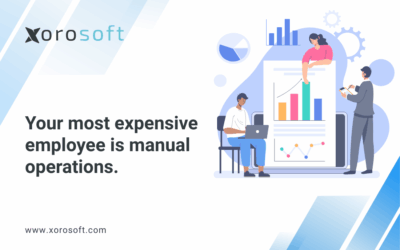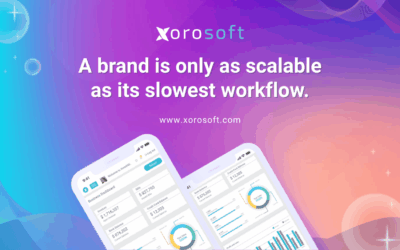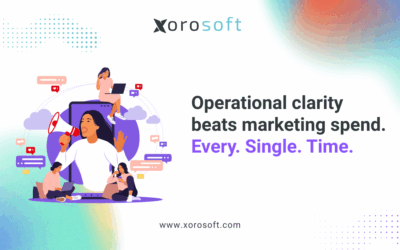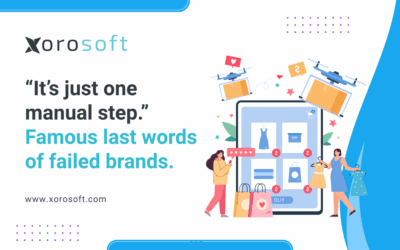
Simplify Operations with ERP Systems for Multi-Channel Growth
Running an ecommerce brand often means managing multiple moving parts — from Shopify to Amazon to wholesale orders. However, as channels expand, operations tend to get messy fast. That’s why more growing brands now rely on ERP systems for multi-channel operations to bring everything together in one place.
Instead of managing chaos across disconnected tools, these systems connect your inventory, orders, and financials automatically. As a result, you can focus on scaling your brand rather than fixing errors or chasing data.
Why ERP Systems for Multi-Channel Selling Feel Complex
At first, expanding from one sales channel to several feels like a smart growth move. You open a Shopify store, add Amazon, then a wholesale portal. Yet soon, every order, refund, and shipment must pass through different systems that don’t talk to each other.
Because of that, you end up:
-
Re-entering order data between channels
-
Chasing down stock discrepancies and backorders
-
Reconciling financial data manually between tools
-
Waiting days to see accurate reports
Each small task eats a bit of focus. Collectively, they turn growth into chaos. Consequently, leaders spend more time managing systems than scaling their vision.
This is exactly where ERP systems for multi-channel operations step in. They’re built to unify the disconnected workflows that make scaling difficult.
What Modern ERP Systems Actually Do
Many people still imagine ERP software as a massive, enterprise-only tool that takes months to implement. Thankfully, that’s no longer true.
Modern ERP systems for multi-channel ecommerce are designed for DTC and omnichannel brands that move fast. They act as your single source of truth — one platform where orders, inventory, purchasing, and financials stay perfectly in sync.
Here’s how they simplify things in practical terms:
-
Order management: They automatically sync every sale from all your channels, eliminating manual data entry.
-
Inventory control: They update stock in real time, which prevents overselling and backorders.
-
Purchasing: They track supplier orders and restock levels, ensuring you stay in stock without overbuying.
-
Accounting integration: They sync invoices and payments with your accounting system, giving you real-time profitability insights.
-
Analytics and reporting: They combine all this data into one dashboard, allowing you to see what’s working — and what’s not — at a glance.
In essence, instead of replacing your tools, the ERP becomes the link that connects them all. Therefore, the system helps you run a complex business with simplicity and precision.
A Brand That Simplified Operations with ERP
Consider a DTC apparel brand that grew quickly through Shopify, Amazon, and wholesale partnerships. Initially, they managed operations with spreadsheets and manual reports. However, as orders increased, mistakes began to snowball.
Each week, the team spent more than ten hours fixing order mismatches and investigating missing SKUs. Inventory accuracy hovered around 92%, and the fulfillment team constantly worked overtime.
After implementing an ERP system for multi-channel operations, everything changed within one month. Their sales channels and warehouse updated automatically. Purchase orders synced with suppliers. Accounting data flowed into QuickBooks overnight.
Within 30 days:
-
Order accuracy rose to 99.6%.
-
Order cycle time dropped by 35%.
-
Cash conversion improved from 14 days to just 9 days.
They didn’t hire new staff or buy new tools. Instead, they replaced hours of manual work with automation that quietly ran in the background.
Five Steps to a Simpler, Connected Operation
Simplifying multi-channel operations doesn’t happen overnight, but it can happen methodically. Here’s a clear roadmap you can follow to bring order and visibility back into your business.
Step 1: Centralize all your channels
Connect Shopify, Amazon, wholesale portals, and your warehouse to one ERP platform. When data flows automatically between systems, you eliminate double entry and data mismatches. The result is higher order accuracy and less wasted time.
Step 2: Automate order routing and fulfillment
Once your channels are connected, configure the ERP to send each order to the correct fulfillment center automatically. This reduces human error and accelerates cycle time. Moreover, customers receive their products faster.
Step 3: Optimize inventory management
Enable automatic stock updates and demand forecasts. As a result, your purchasing team knows exactly when to reorder and how much to buy. This reduces both stockouts and overstocking, improving inventory turnover.
Step 4: Integrate accounting for real-time clarity
When your ERP syncs directly with your accounting system, manual reconciliation becomes unnecessary. Therefore, you always know your real cash position and gross margins. This integration shortens the cash conversion cycle and improves decision-making.
Step 5: Monitor key metrics weekly
Finally, use your ERP dashboard to track order accuracy, inventory turnover, and order cycle time. Rather than waiting for month-end reports, you can see issues early and make data-driven adjustments. Over time, this consistent visibility creates stability and confidence.
How to Get Started Without Overwhelm
Many leaders hesitate to implement an ERP because they fear a complex rollout. However, modern solutions are surprisingly simple to deploy.
Start by mapping your current data flows — where orders come from, how inventory is tracked, and how financials are reconciled. Next, choose a platform that integrates with your main channels. For example, you can review the Easiest-to-Use ERP Systems on G2 to see which fit your business model.
Then, connect your sales channels one at a time. Because modern systems are API-driven, data begins syncing almost instantly. Within a few days, you’ll notice cleaner inventory records and faster reporting.
If you’re using Shopify, the Xorosoft ERP app offers a Shopify-native integration that automates much of the setup. It’s a great option for growing DTC brands that need powerful operations without adding technical complexity.
Key Results You Can Expect
Once you’re running on a connected platform, you’ll notice measurable improvements across several areas.
-
Order accuracy rises because human entry errors disappear.
-
Cycle time shortens as orders flow automatically to fulfillment.
-
Inventory turnover improves through better forecasting.
-
Cash conversion accelerates since reconciliations happen instantly.
These are not abstract benefits — they are tangible, measurable gains that compound every month.
Common Misconceptions About ERP Systems
Even with all these benefits, some founders hesitate to make the leap. Let’s clear up a few common misunderstandings.
“An ERP is only for big companies.”
That was true ten years ago, but no longer. Today’s ERP systems for multi-channel ecommerce are modular, affordable, and designed for lean teams. You can start small and expand as you grow.
“It will slow down my Shopify store.”
Modern integrations work behind the scenes through APIs. Therefore, they don’t affect your site’s performance or checkout speed.
“We’ll need an IT department to manage it.”
That’s another myth. Most cloud-based ERP platforms are designed for operations managers, not engineers. Setup takes hours, not weeks.
“The ROI takes too long.”
Most brands begin seeing measurable improvements in accuracy and speed within 30–45 days. In many cases, the system pays for itself by preventing costly mistakes.
Practical Tips for Sustained Efficiency
Once your ERP is live, consistency matters more than complexity. For example, schedule short weekly reviews to check key KPIs. Encourage your operations team to use the system as their daily control center rather than reverting to spreadsheets.
Moreover, keep optimizing automations over time. You might start with order routing, then add automated purchase orders or margin tracking later. Step by step, the system grows with your business.
Because everything is connected, small changes ripple across your operation, improving accuracy and freeing up capacity. Consequently, you can spend more time on marketing, product innovation, and customer experience.
Why Simplicity Wins in the End
Growth doesn’t have to equal complexity. With ERP systems for multi-channel operations, scaling becomes structured instead of stressful. You no longer have to juggle disconnected data or patch broken workflows.
Instead, you gain full visibility and control while freeing your team to focus on creative, strategic work. The most successful ecommerce brands operate with simplicity at their core — using technology to amplify, not complicate, their business.
Ready to Take the Next Step?
If you’re ready to simplify your operations and unlock time for growth, explore how XoroERP can help. Built for modern omnichannel brands, XoroONE connects sales, inventory, and accounting seamlessly.
You can also Book a demo to see how it fits your business in real time. With the right ERP system for multi-channel operations, your brand can scale faster, operate smarter, and grow without the growing pains.









